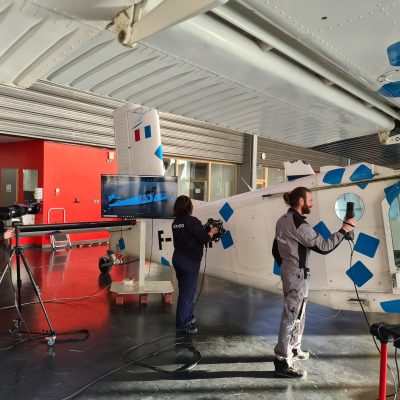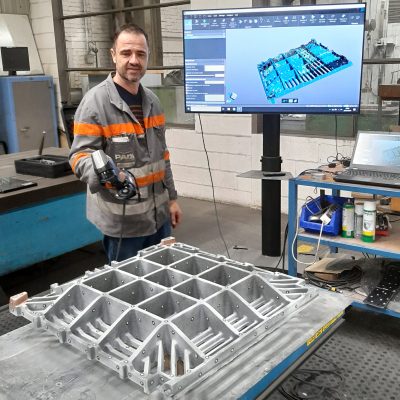April 30, 2024
Electrifying an Aircraft Using 3D Scanning and Augmented Reality See the article
This team is definitely one of them, so we wanted to introduce them to you a little. Meet Global Formula Racing! They are just like any other engineering university students who are passionate about building highly competitive vehicles… Except that they’re not. Their peculiarity: the team is spread in two different continents, 8,770 km (5,450 miles) and 9 time zones apart!
That is exactly what drawn us to their project in the first place: the team includes students from two different engineering schools: Duale Hochschule Baden-Württemberg-Ravensburg in Germany and Oregon State University in the US. Their collaboration has been going on since 2009 and is quite unique within the Formula SAE universe: they share their resources and communicate often (in English), they design, manufacture and test their technology simultaneously in two countries, and must raise overcome the challenges of long distance chain supply management!
The Vehicles
In 2010, for their first year of competing as a single team, the students built two identical cars at each university, thus laying the foundation for design in the years to come. But since then, their method has changed: each year the Oregon team builds a combustion car, while the German team builds an electric one.


The Team

The team results speak for themselves: in 2016, the combustible car won fourth place at the FSAE Michigan competition and 2nd place at FS Austria. That same year, the electric car came in 5th place at the latter competition!
And what about their 2015 “landslide year” results? GFR won 1st place at FSAE Michigan, FS Austria and FS Germany, while GFRe came in 3rd place in Austria and 4th place in Germany!
The Challenges
Obviously, communication is an obstacle to overcome every day: when the US students get to school in the morning, the day in Germany is probably winding down already! But the team still manages to Skype often and also takes advantage of well-maintained online databases.
Since each of the students have their own specialties, the whole team can participate to the project, regardless of their geographical situations. With such wide and diverse perspective coming from different backgrounds, it is important to coordinate well in order to make each voice heard as well as to ensure that each talent is put where it can be most valued and useful! But in the end, this large, international insight truly gives the project an edge for building faster, lighter and smarter cars.
3D Technologies
During the design phase, the team heavily relies on complex CAD models and new ideas can emerge from them until right before the freeze.
With the loaned 3D scanner they received from Creaform, the team was able to scan the engine of their car in order to optimize this crucial part. According to Oregon team member Navi Singh, the tool has proved to be “very valuable for the team”. For the 2017 season, the team plans to use the 3D scanner to further detail their CFD model. More specifically, they want to scan the car tires in order to quantify the effect of contact patch deformation and side wall deflection on undertray/diffuser performance.
Good luck/Viel Glück for the upcoming season GFR!








